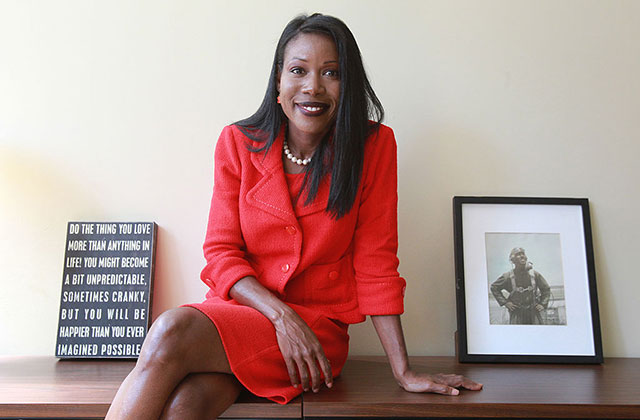Pulitzer Prize-winning journalist Isabel Wilkerson debuted her newest book “Caste: The Origins of Our Discontents” on August 4 and spoke with Terry Gross, the host of NPR’s “Fresh Air” podcast, on the same day to discuss what she called the United States’ “bipolar” caste system.
“That is the term that is more precise,” Wilkerson argues of a caste system instead of systemic racism, when thinking about the nation’s social structures. “It is more comprehensive, and it gets at the underlying infrastructure that often we cannot see but that is there undergirding much of the inequality and injustices and disparities that we live with in this country.” By bipolar, Wilkerson meant Black and white.
The book “Caste” explores the connections between the U.S., India and Nazi Germany and how the system, though unspoken in the U.S., persists. In her interview with Gross, Wilkerson breaks down the difference between caste and race, Black and white, where immigration fits in and more.
Check out some of the must read excerpts from the interview transcript below:
rn
rnWhat is a caste system:
I found that the word racism, which is often applied to discussions of interactions among and between African Americans and other groups in this country—I found that term to be insufficient to capture the rigid social hierarchy and the repression that they were born into and that, in fact, everyone in that regime had to live under. And so I turned to the word caste, which is a word that had been used by anthropologists and social scientists who went in to study the Jim Crow era in the 1930s in particular. And they emerged from their ethnography, they emerged from their time there with the term caste as the language to use to describe what they found when they went there.
[…]
I think of caste as the bones and race as the skin. And that allows us to see that race is a tool of the underlying structure that we live with, that race is merely the signal and cue to where one fits in the caste system. And caste system is actually an artificial hierarchy. It’s a graded ranking of human value in a society that determines the standing and respect, the benefit of the doubt and access to resources, assumptions of competence and even of beauty through no fault or action of one’s own. You’re just born to it. And so caste focuses in on the infrastructure of our divisions and the rankings, whereas race is the metric that’s used to determine one’s place in that or one’s assignment in that caste system.
“Black” and “white” are American innovations:
It’s an innovation that is only several hundred years old, dating back to the time of the transatlantic slave trade. And that is because before that time, there were humans on the land wherever they happened to be on this planet, and because of the way people were living on the land, they were merely who they were. They were Irish or they were German or they were Polish or Hungarian.
And only after the transatlantic slave trade, only after people who had been spread out all over the world converged in this one space, the new world, to create a new country, a new culture, where all of these people were then interacting and having to figure out how they were going to relate to one another—that is when you have a caste system that emerges that instantly relegates those who were brought in as to be enslaved—relegated them to the very bottom of the caste system and then elevated those who looked like those who had—who created the caste system, meaning those who were British and Western Europeans, at the very top of the caste system.
The role that immigration plays in maintaining the caste system:
There was an effort to restrict who could come into the country if they were not of Western European descent, tremendous back-and-forth, tremendous efforts on the part of eugenicists, who then held sway in the popular imagination—tremendous effort to keep out people who we now would view as part of the dominant group. So there was a form of curating who could become a part of the United States and where they would fit in. And they used immigration laws to determine who would be able to get access to that dominant group.
To listen to the podcast in full, play below, courtesy of NPR:
